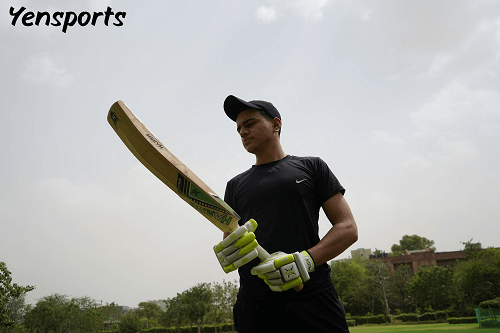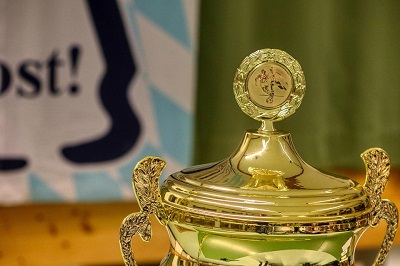Evolution in Cricket Uniform: A Distinguishing Perspective
Cricket:
Cricket, as a game, has a history that goes back many years. When it comes to all the aspects of cricket that have seen incredible evolution over time, cricket uniforms are one of the major ones. From the early white woolen outfits worn for games long ago to the bright colors with intricate kits worn today, it has seen an evolution with the advancement in technology, fashion, and the demands of the game itself.

Early Cricket Uniforms:
Cricket:
Cricket was an elitist sport for the British, which meant that early uniforms were, in general, donned to signify that status symbol. Tailcoats were commonplace, along with their top hats and knee-length breeches. It was only as the 19th century dawned that clubs finally began to standardize.
It was by the late 1800s that white flannels became the most recognizable attire. This included long trousers, a white shirt, and a sweater or vest for colder months. The color white was not only practical for washing and wearing but also symbolized purity in the game as well as sporting ability. This white kit dominated until the 1990s and the most iconic form was the all-white attire worn by England, Australia, and other international teams.
Cricket Uniform Design:
Cricket:
The biggest change to uniform design came in the early 1990s when the International Council (ICC) allowed for colored clothing in limited-overs formats such as One Day Internationals (ODIs) and Twenty20 (T20) matches. The move to permit color was made to make the game more appealing to view on television and to have a distinction between different types of the game.
The first major application of colored clothing in professiprofessionalsthe 1992 World Cup. Australia and West Indies were some of the first teams to wear bright, team-specific colors. Australia wore a striking green and yellow uniform, while the West Indies went with their signature maroon colors. Other teams followed suit in the years that followed, leading to the iconic kits that we associate with modern cricket.
Advancements Made in Technology for Equipment:
Cricket:
During the last hundred years, various technological advancements have impacted the kit immediately, both in terms of material and design. This has been about comfort in playing and safety, or rather the ability to conduct oneself better during games of cricket. What used to be made from cotton or wool is completely replaced today by synthetic materials like polyester and spandex. Light, porous, and absorbent of moisture, keeping the person dry and the body temperature down while in use.
The most important modern innovation in wear is that of custom-fitted equipment. Players are often suited with shirts and pants based on specific body measurements, which allow for greater flexibility and mobility on the field. The integration of mesh panels and stretchable fabrics has greatly increased the range of motion among players, especially in games like T20 cricket where agility and speed are important.
Protective Equipment: The Unsung Hero of the Team
Cricket:
Apart from the clothes, the protective gear is an integral part of a kit, primarily for batsmen and wicketkeepers. The helmet, gloves, and leg pads are some common items that are used to prevent injuries. Over the years, the designs and materials of these pieces of protective equipment have become more safety-sensitive without compromising comfort and performance.

For example, cricket helmets, which were introduced in the 1970s, have undergone numerous improvements. Early helmets were heavy and uncomfortable, but modern designs are lightweight, with reinforced grills and padding that offer superior protection against high-speed deliveries. Similarly, gloves and leg guards are made with high-tech foam and lightweight materials, offering flexibility while ensuring maximum protection.
Role of Sponsors and Branding:
In the new era, cricket uniforms are a reflection of the team as well as a platform for advertising and sponsorship. Sponsorship is an inevitable part of the world; logos of different brands are placed on the player’s uniform. However, commercial interest has increased significantly. Teams have to come up with exclusive agreements regarding their sponsorship and the style of their uniforms.
Sponsorship also decides the color and design of kits. Teams are now dressed often in unique patterns, logos, and color schemes other than national colors and symbols to be aligned with their sponsor’s branding.
FAQs About Uniforms:
Cricket:
1. Why are uniforms traditionally white?
Traditionally, cricket uniforms were white. That is the color of purity. The game also requires professionalism in terms of how it is played. The clothes were also easier to maintain because the game was played in a time before synthetic fabrics and commercial laundry. Additionally, white was a fashionable color for the sport of the elite when the game first started.
2. When did the teams begin wearing colored uniforms?
International was first seen to use colored uniforms during the early 1990s, particularly during the 1992 Cricket World Cup. Some of the first teams to popularize bright colors were Australia and the West Indies, intended to be eye-catching for television viewers and to differentiate limited-over formats from traditional Test.
3. What are the materials currently used in uniforms?
Contemporary cricket dress is produced using synthetic lightweight breathable fabric like polyester, spandex, and Lycra. These are moisture-wicking fabrics. Therefore a will never get moist and feel pain during long-lasting matches. This cloth also provides great freedom for movement and flexibility, necessary in rapid formats of cricket, including T20.
4. What modifications to protective equipment have advances in technology brought about?
Cricket protective gears are manufactured using advanced technology and are therefore safe and comfortable to wear. Helmets are lighter and more aerodynamic. Gloves and shin guards come with the thinnest padding material that provides additional protection. Modern protective gears have become more flexible, allowing players to move freely and have less chance of injury.
5. How do sponsors contribute to uniforms?
Sponsorship has become a new feature integrated into kits. It is whereby brands and firms pay teams to wear their emblems on the kits for the players. This has been the cause of the increased various appearances for uniforms that integrate the logos and themes for a sponsor’s branding to match the team colors, national or team color.
Conclusion:
Cricket:

The progression of cricket kits has remained the actual reflection of how the game itself has developed. While it was evolving from the traditional white uniform to high-performance gear, uniforms evolved according to the sport’s and audience’s demand. At a time when technology will continue to evolve further and the sport becomes even more commercially viable, uniforms will probably keep evolving in terms of design and functionality shortly.

